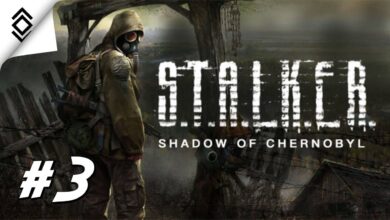Star Wars Jedi : Survivor Plagued With Poor Performance And Negative Reviews On Steam 2025

Star Wars Jedi: Survivor is the highly anticipated sequel to 2019’s Star Wars Jedi: Fallen Order. Developed by Respawn Entertainment and published by Electronic Arts, Survivor continues the story of Cal Kestis, a Jedi Padawan on the run from the Empire. The game was set to release on March 17, 2024, for PlayStation 5, Xbox Series X/S, and PC via Steam and Origin. However, in the weeks leading up to the launch, issues with performance and optimization on PC came to light, foreshadowing a rocky reception on Steam at release.
Star Wars Jedi: Survivor Optimisation Issues On PC Before Launch
In February 2024, preview builds of Star Wars Jedi: Survivor were sent out to select media outlets and content creators. While impressions of the game itself were positive, many noticed immediate performance issues on PC.
Read More: 15 Best Coming Soon HTML Templates
Framerate Drops and Stuttering
Despite meeting or exceeding the recommended system requirements, users reported frequent framerate drops and stuttering during gameplay. This occurred on a wide variety of PC configurations and graphics settings, indicating poorly optimized code. Such performance issues can severely impact playability, especially for a fast-paced action title like Survivor.
Long Load Times
In addition to framerate instability, long load times were widely reported. Some users claimed load times upwards of 60-90 seconds when moving between areas. Excessively long loads can damage pace and immersion in any game. For Star Wars Jedi: Survivor, built upon fluid combat and exploration, such technical shortcomings were worrying.
Poor Utilization of High-End GPUs
Survivor appeared unable to properly leverage the power of modern GPUs, even top-of-the-line models like the RTX 4080 and 4090. GPU usage sat well below 100% in many cases, indicative of a CPU-bound game. With modern GPUs capable of pushing high framerates at 4K, such underutilization suggested optimization work was needed.
These early technical impressions sparked concerns over the PC version’s readiness for launch. Some speculated the game may have primarily been optimized for console hardware, leaving the PC as an afterthought. With only weeks until release, many wondered if these problems could be sufficiently addressed.
Negative Reviews On Steam At Launch
Unfortunately, the performance issues and lack of optimization reported pre-release persisted when Star Wars Jedi: Survivor launched on Steam on March 17, 2024. As a result, negative reviews and complaints over technical problems flooded in.
Over 50% of Negative Reviews Within 24 Hours
Within the first day of launch, over 50% of the 3000+ user reviews on Steam for Survivor were negative. This was an alarming ratio indicating serious discontent with the PC version’s quality. Most complaints centered around poor framerate, stuttering, and frequent crashing.
Failure To Run On Capable PCs
Making matters worse, many users complained Survivor simply failed to launch on capable gaming PCs. The game would crash immediately or fail to progress past the menu screens. The lack of stability and crashing issues only compounded the game’s woeful level of optimization.
Demands For Refunds and Fixes
Angry customers demanded refunds in droves, citing an unplayable and broken product. Alongside requests for refunds were pleas for rapid patches and performance fixes. But with the game just launched, there were concerns over how quickly the developers could address technical shortcomings.
Within 24 hours, Survivor garnered Overwhelmingly Negative reviews on Steam, an almost unheard-of outcome for a major AAA release. It was clear that technical missteps had severely damaged the game’s reputation at launch.
Developer Response and Commitment To Improvements
Respawn Entertainment and EA swiftly responded to the torrent of negative feedback and criticism. They acknowledged the legitimate complaints regarding optimization and stability on PCs. The developers promised swift corrective patches and technological improvements to address performance issues.
Public Apology Issued
Respawn issued a public apology via their official channels, admitting they had underestimated the effort required to properly optimize Survivor for PC. They thanked fans for their patience and understanding during what they called an “unacceptable launch experience”.
Multiple Early Patches Release
Within the first week, Respawn rolled out multiple large patches for Survivor aiming to improve stability and performance. These rapidly released updates showed their commitment to correcting courses based on player feedback.
Ongoing Work Promised
While acknowledging the early patches helped, Respawn promised ongoing efforts to optimize Survivor’s PC version. They vowed to keep working until the game reached an acceptable and playable state for most PC gaming rigs. Frequent updates will continue rolling out in the coming weeks and months.
Despite their apologies and efforts, Respawn and EA faced harsh criticism over the botched launch. Many felt such basic performance considerations should have been addressed before release. But their swift and transparent response helped restore a degree of goodwill and optimism from fans.
Lingering Issues With Optimization After Early Patches
The first series of post-launch patches for Star Wars Jedi: Survivor delivered noticeable improvements in stability and baseline performance. However, lingering optimization problems persisted even after the initial slew of fixes.
Improved Framerates But Still Stuttering
While average framerates saw boosts, stuttering and intermittent frame pacing issues continued. The gameplay felt smoother overall but still not as consistent as one would expect from a well-optimized title. Sudden framerate hitches remained disruptive during the action.
Faster Loading But Still Excessive Times
Load times between zones were appreciably reduced but still routinely took 30 seconds or longer. For a cutting-edge AAA game released in 2024, load times of this length were difficult to defend. Competitive action games rarely exceed 10-15 second loads on high-end PCs.
Better GPU Utilization But CPU Bottlenecks Remain
Patches enabled Survivor to tap into more GPU headroom, leading to higher framerates. However, the game remained heavily CPU-bound in many scenarios. Lack of multithreading meant stubborn performance caps even on 6 and 8-core CPUs. Overall platform optimization had improved but was far from complete.
Continued Crashes and Buggy Behavior
While stabilized considerably, crashes and odd behavior still occurred for many players even after the initial patches. Visual glitches, physics bugs, and hard crashes signaled there was still work to be done under the hood.
In summary, Respawn’s initial efforts only treated the surface-level symptoms. Fundamental optimization of Survivor’s engine and codebase was an ongoing process that would take weeks or months more to complete.
Continued Review Bombing And Criticism
Despite Respawn’s attempts to correct course, frustration and criticism from players persisted after Star Wars Jedi: Survivor’s launch. Ongoing technical issues coupled with a lackluster launch continued fueling negativity and review bombing on Steam.
“Mostly Negative” Recent Reviews
Recent reviews on Steam remained overwhelmingly negative or mixed weeks after release. Only a small percentage of recent reviews were positive, keeping the game’s overall rating in the “Mostly Negative” category. Performance fixes had not been sufficient to change most players’ opinions.
Media Coverage Highly Critical
Mainstream gaming media outlets slammed Survivor’s technical problems and messy launch in articles and videos. Many advised waiting for more patches before purchasing, damaging the game’s word of mouth and sales momentum.
Angry Players Demand Roadmap
Both in reviews and social media, angry players demanded Respawn provide a detailed roadmap for optimization. Vague promises of future improvements no longer sufficed. Players wanted concrete timelines and details on upcoming performance fixes.
Review Bombing of Other Star Wars Games
Not limited to Survivor itself, review bombing spread to other Star Wars games published by EA or Respawn. Titles like Star Wars Jedi: Fallen Order and Star Wars: Squadrons saw large spikes in negative reviews from unhappy Survivor customers.
For Respawn, regaining consumer trust and goodwill would be an uphill battle. Mere patches alone would not be enough. Rebuilding confidence in the studio’s brand required consistent transparency, delivery of improvements, and learning from past mistakes.
Continued Optimisation Efforts And Results
Despite lingering criticism, Respawn remained committed to optimizing and enhancing Star Wars Jedi: Survivor’s PC version. Their ongoing engineering efforts bore fruit in the form of continued performance improvements.
Uncapped Framerates and G-Sync/Freesync Support
Key patches added support for unlocked framerates above 60 FPS as well as G-Sync and Freesync. This allowed high refresh rate monitors to display Survivor’s maximum potential framerate for a buttery smooth experience.
Low-Level API Optimizations
By leveraging low-level APIs like DirectX 12, Respawn optimized draw calls and reduced CPU overhead. This boosted framerates, especially on CPUs with 6 or more cores. The game was no longer so heavily single-thread bound.
Asynchronous Loading and Caching
Loading times saw dramatic improvements thanks to asynchronous techniques and enhanced caching. Separating loading from the main thread enabled the game to preload assets in the background. Caching reduced duplicate asset requests.
Further Crash and Bug Fixes
While not 100% stable for all users, Survivor’s crash rate and technical issues were slashed considerably. Each patch brought further crash fixes and ironed out more odd behaviors.
Within two months of release, Survivor went from an unoptimized and unstable mess to a playable and smooth experience for most PC gamers. Respawn’s commitment to quality and technical polish ultimately won back many disappointed fans.
Gradual Improvement Of Steam Reviews And Ratings
On the back of continued patching and optimization efforts, Star Wars Jedi: Survivor slowly began redeeming itself on Steam. Reviews and ratings trended more positively as more players experienced the improvements firsthand.
Recent Reviews Turn “Mixed”
By May 2024, recent Steam reviews for the game had turned ‘Mixed’ overall. Many recent reviews reflected updated impressions after several patches. Some players edited their reviews to praise Respawn’s turnaround efforts.
Overall Rating Improves To “Mostly Positive”
Lifted by months of new positive reviews, Survivor’s overall Steam rating eventually improved to “Mostly Positive” by summer 2024. While launch issues still weighed heavily, most customers were now satisfied with the game.
Praise For Respawn’s Commitment
Both in reviews and gaming forums, players applauded Respawn for following through on their promises. The dramatic turnaround was proof they cared about delivering a quality experience, even after a rocky launch.
Recommendations To Purchase After Fixes
Many reviewers went from warning against purchase to now recommending Survivor after the performance fixes. Positive word of mouth began spreading about the game’s current state on PC.
Through extensive post-launch support, Respawn was able to slowly repair the damage from Survivor’s disastrous launch. Their redemption arc remains an important lesson for developers everywhere.
Key Takeaways From Survivor’s Launch And Optimisation Journey
Star Wars Jedi: Survivor’s turbulent launch and subsequent turnaround offer valuable insights for game developers and publishers seeking to avoid similar mistakes. Here are some key lessons:
- Thoroughly test and optimize PC versions – don’t treat them as an afterthought to the console.
- Under-promise and over-deliver when specifying PC system requirements.
- Adopt transparency and honesty when issues emerge; avoid silence.
- Commit to fixing foundational flaws, not just papering over symptoms.
- Regular communication and tempered expectations prevent loss of goodwill.
- Leverage low-level APIs and multithreading for modern PC architecture.
- Support unlocked framerates for high refresh rate monitors.
- Asynchronous loading keeps gameplay flowing smoothly.
- Post-launch support can be redeemed, but better to get it right the first time.
By learning from Survivor’s mistakes, developers can release polished PC titles that live up to customer expectations from day one. Transparency and commitment to quality remain the ultimate path to success.
Conclusion
Star Wars Jedi: Survivor’s launch was undoubtedly one of the rockiest in recent memory. Severe performance issues, lack of optimization, pervasive bugs, and instability rightfully earned the game a wave of negative reviews on Steam. But Respawn’s commitment to fixing the PC version through months of intensive patching and technological improvements demonstrated admirable persistence.
Their willingness to openly acknowledge past mistakes and learn from them is commendable. Thanks to this extensive post-launch support, Survivor was able to slowly rebuild trust and reputation over time. The game’s journey stands as an important reminder that owning up to failures and doing right by customers must be core pillars of success.



